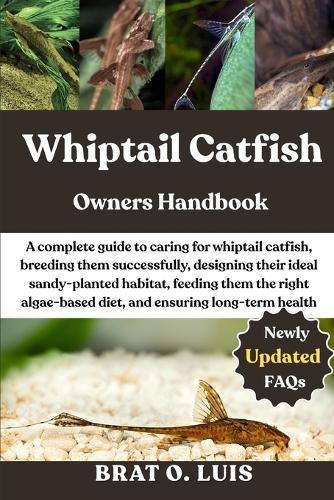Overview
The most distinctive characteristic of the whiptail catfish is its body shape. Slender, elongated, and flattened ventrally, it is perfectly adapted for clinging to substrates and minimizing resistance in fast-flowing waters. Unlike many bulky loricariid relatives, Rineloricaria species resemble a twig or stem, which explains both their common name and their effectiveness at camouflage. This body plan is supported by a rigid series of bony plates, a hallmark of loricariid catfishes, which provide protection against predators. Morphological adaptations extend to their fins. The pectoral and pelvic fins are broad and horizontally extended, functioning like stabilizers that help the fish maintain position on sandy substrates. The caudal fin is often adorned with elongated filamentous extensions, enhancing their twig-like appearance while also aiding in subtle maneuverability. These trailing filaments are not essential for locomotion, but they contribute to disguise and may play a role in social signaling. The dorsal fin, positioned midway along the body, is relatively small and not used for sustained swimming. Instead, locomotion relies on coordinated fin movements that allow for bursts of speed when escaping threats. Coloration is another defining feature. Most whiptails are patterned in shades of brown, tan, and gray, mottled with irregular blotches and stripes that break up their outline. This cryptic coloration allows them to blend with sandy substrates, driftwood, or leaf litter. Unlike more colorful ornamental fishes, whiptails rely on subtlety rather than brilliance. However, aquarists often remark on the understated beauty of their patterning, especially when observed closely under subdued lighting. Some species exhibit faint reddish or golden hues, particularly on the fins, which add to their visual appeal. One of the most remarkable adaptations of Rineloricaria is their specialized mouth. Like other loricariids, they possess a ventrally located, sucker-like mouth designed for grazing surfaces. The oral disk allows them to attach firmly to substrates, resisting strong currents while scraping algae, detritus, and small organisms from surfaces. This feeding adaptation also enables them to process biofilm, which is a major dietary component in the wild. The teeth are small, spoon-shaped, and numerous, perfectly suited for scraping and grinding organic material. Respiration is enhanced by their ability to gulp air and absorb oxygen through their gut lining, a trait shared with some other catfishes. This adaptation provides an advantage in oxygen-poor environments such as stagnant backwaters or during the dry season when dissolved oxygen levels drop. For aquarists, this means that while they benefit from well-oxygenated water, they are surprisingly resilient under less-than-ideal conditions. Another adaptation lies in their reproductive strategy. Many species of Rineloricaria are cave or crevice spawners, with males guarding the eggs until they hatch. The elongated body shape allows them to fit into narrow spaces, while their subdued coloration helps conceal them during the vulnerable breeding period. Males often develop odontodes-bristle-like structures on the cheeks and pectoral fins-that become more pronounced during breeding. These not only aid in sexual display but also in defending spawning sites.
Full Product Details
Author: Brat O Luis
Publisher: Independently Published
Imprint: Independently Published
Dimensions:
Width: 15.20cm
, Height: 0.60cm
, Length: 22.90cm
Weight: 0.154kg
ISBN: 9798269131047
Pages: 106
Publication Date: 09 October 2025
Audience:
General/trade
,
General
Format: Paperback
Publisher's Status: Active
Availability: Available To Order

We have confirmation that this item is in stock with the supplier. It will be ordered in for you and dispatched immediately.



